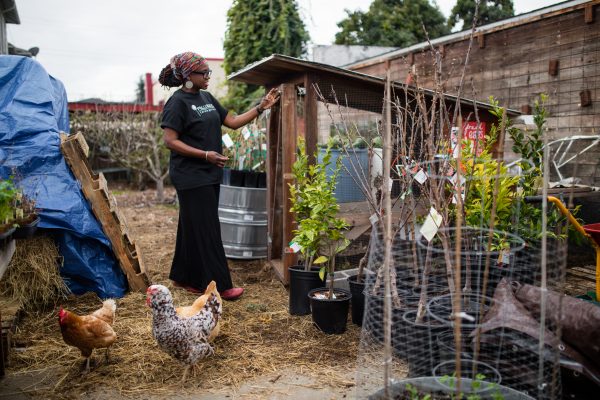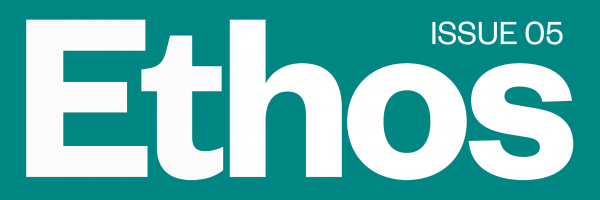“I think there is demand for alternative funding – especially for women – as they aren’t able to get the same sort of financial services that men are, depending on what country they’re in,” says Jessica Hansen, global engagement officer at Kiva, the online lending platform which has funded millions of projects worldwide. “In the US, female entrepreneurs are successful in securing funding from the banks around 4-5% of the time – with Kiva US it’s around 60-70%; and with Kiva international it’s 81%,” says Hansen.
“There’s a long-standing idea that men are traditionally supposed to be in leadership positions, and Kiva is turning the tide on that,” says Hansen. “It’s also the demand from the lenders driving up those percentages – a lot of our lenders want to empower women and are aware of women’s rights.”
Alternative funding mechanisms have been on the increase over recent years, with crowdfunding and micro-granting – for certain businesses, at least – taking precedence over more traditional forms of philanthropy. A pioneer in the crowdfunding world, Kiva burst onto the scene in 2005, reinventing microfinance for the masses and providing funding options for those who would traditionally be overlooked by banks and lenders.
Kiva’s 1.7 million lenders worldwide invest as little as $25 into a chosen project, which could be asking for anything from $100 to buy seeds and fertiliser, to $25,000 to buy soap making equipment to start a business. The beauty of the platform is that lenders are collectively bringing projects to life, alongside on online community of investors – who have each also put in $25. Borrowers can either apply for a loan directly through the Kiva website, or through one of Kiva’s field partners on the ground in cities worldwide. Like a crowdfunding campaign, the loans are active on the Kiva website for 30 days, during which time it raises the necessary capital, before the campaign expires. Even loans that are not fully funded can be accessed by Kiva borrowers.

Lucy Moss has been lending on Kiva since 2012: “All of my loans are predominantly to women, because women have the hardest time accessing funds around the world – especially in the Middle East,” she says. Moss, who was born in Beirut, Lebanon, says that the personal connection that Kiva offers is one of the reasons why she was drawn to the platform. “I’ve mainly lent to people in the Middle East, I lend a lot in Lebanon, Palestine and the Gaza Strip. My very first loan was to a woman called Asma – a 37-year old mother of four who wanted to buy supplies for her office business. After that loan was repaid in full, I reinvested the $25 that I has invested in Asma, into a woman called Hanan, who needed to purchase stock for her grocery store – she repaid so quickly that I reinvested the money straight back into her business, so she could expand it,” says Moss.
“I currently have four loans on the go – one to a Lebanese woman called Nadja, who needs funding for her embroidery business; Caroline is also Lebanese, and my loan is helping to fund her clothing business; Awad is a Syrian refugee who has asked for funding to help him find his brother; and Sireen, who lives in Gaza needs help to buy solar cells for her house,” says Moss.
“Kiva was founded following a speech from founder of Grameen Bank, and Nobel Peace Prize recipient, Muhammad Yunus, who many consider to be the founder of microfinance,” says Hansen. “Our co-founder, Jessica Jackley, saw him speak and was inspired by the idea of bypassing the financial institutions that might not see the value of serving the poor. Lots of people can’t get financial access because they’re illiterate, they’re poor, or they live in remote places – there’s all sorts of reasons. Kiva was created so that anyone, anywhere can lend, and anyone anywhere can get a loan.”
Kiva allows borrowers to crowd-source finance from numerous lenders at once, to bring their project, idea or business to life. Taking a quick look at the Kiva website, it’s obvious that this funding mechanism holds inclusion at its heart – lenders choose from borrowers from a variety of categories, including: agriculture, education, conflict zones, eco-friendly projects, refugees and women, to name just a few. The crowdsourced aspect of the lending process means that the fear of non-repayment of a loan is lessened, since the amount invested is relatively low.
“Our repayment rate is around 96.9%,” says Hansen. “I think that’s tremendous. I had a friend who worked at Kiva before I joined the team, and he was explaining the concept to me. I remember telling him that I didn’t think that the lenders would get repaid because a lot of the borrowers live in areas that suffer from natural disasters, they’re living in extreme poverty, they’re refugees, or they’re from conflict areas,” she says. “Normal banks are getting loans back around 70-75% of the time; the fact that people in poverty are able to pay back more than that, blew my mind – it was really amazing,” says Hansen.
“Because it happens so seldom, I think our lenders are quite happy to take on that risk of default, because they know that this person is trying to start a business in not so ideal conditions. There were landslides and flooding in Peru and a typhoon in the Philippines, and it saw lots of people’s businesses get wiped out. Everybody who has invested in those companies would lose $12.50, for example, instead of any one person losing $5,000 – crowd financing makes that risk much more manageable, to have it spread amongst a lot of generous lenders,” says Hansen.
“I did a lot of research before I made my first loan on Kiva, I didn’t want to just throw my money around the world. But, because of the borrower’s repayment rates, which are envied by lots of banks around the world – I decided to invest. And today I’ve got a long portfolio of borrowers that I’ve helped,” says Moss.
Kiva is a platform which is particularly attractive to women, with 81% of the borrows on the platform being female. “Our first ever borrowers were seven women from Uganda, and they each got around $500 worth of loans” says Hansen. Since the beginning, Kiva has worked towards supporting women start up their own businesses and fund their projects; International Women’s Day is particularly pertinent to the platform.
“Our International Women’s Day campaign is our most successful campaign of the year, and it continues to grow,” says Hansen. “Normally we lend about one million dollars every three days to women – but for International Women’s Day, 2017, we lent almost six million dollars in a single day.
“It was the climate of people realising that if we put financial access and power in the hands of women, a lasting sustainable change can be made. I think there’s both the need, and the desire on the lender’s side, to see women gain more financial access, become leaders of business, and have more participance in local governance.
“We’re getting ready for International Women’s Day again this year, and we’re hoping that because of the Me Too and Time’s Up campaigns, and other movements to empower women around the world, that there will be an even bigger drive to support women,” she says. “It was there before all of this started, but I think that it’s really in the spotlight now that supporting women is really powerful.”
The Kiva International Women’s Day campaign tells the stories of incredible women from around the world who have all found success through borrowing on the platform. “We make sure that we highlight women from all different sectors,” she tells me. “They might be students in Kyrgyzstan who really want to pursue an education, and Kiva lenders can help them to do that through a loan. It could be a female entrepreneur trying to empower tens of thousands of farmers in Kenya. They’re all so different – but they’re all stepping up and taking important roles in their communities and in their families and showing other women that it can be done. We have great partners that are really interested in supporting the great women in communities around the world.”
Working internationally with around 320 partners on the ground in 83 countries, Kiva supports the work of established organisations which are already doing great work in the community. “We just expand the amount of work that they can do,” says Hansen. “They’re all really dedicated, and some of them will only lend to women; some of them make sure that they provide services in the community to really support and empower women,” says Hansen.
Read more of this feature in Ethos Issue 05
[shopify embed_type=”product” shop=”ethos-magazine.myshopify.com” product_handle=”ethos-magazine-issue-5″ show=”all”]


